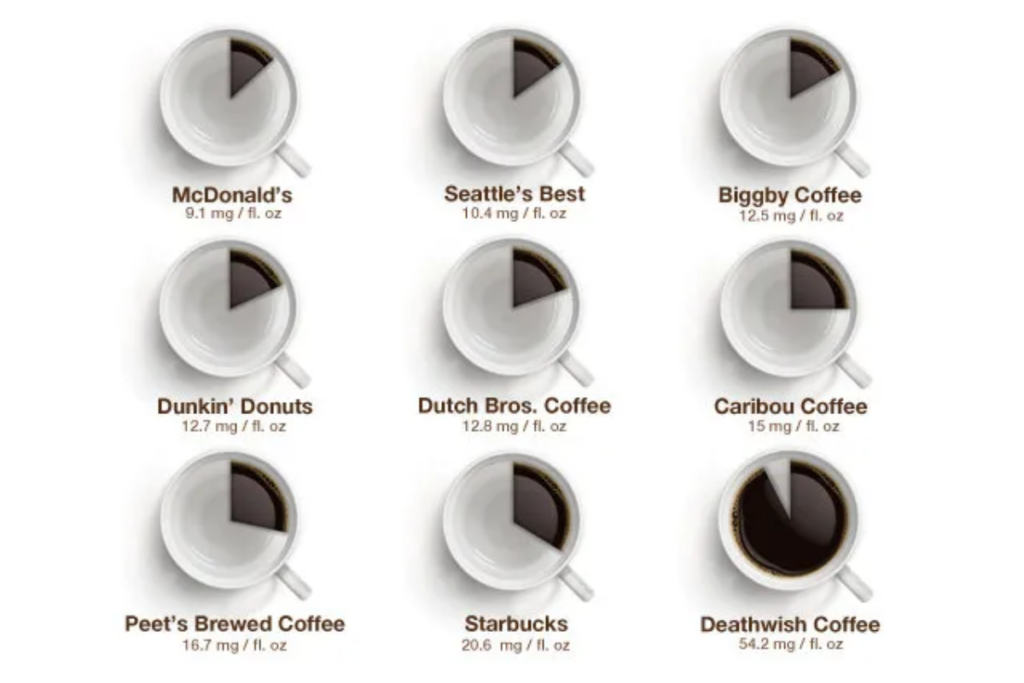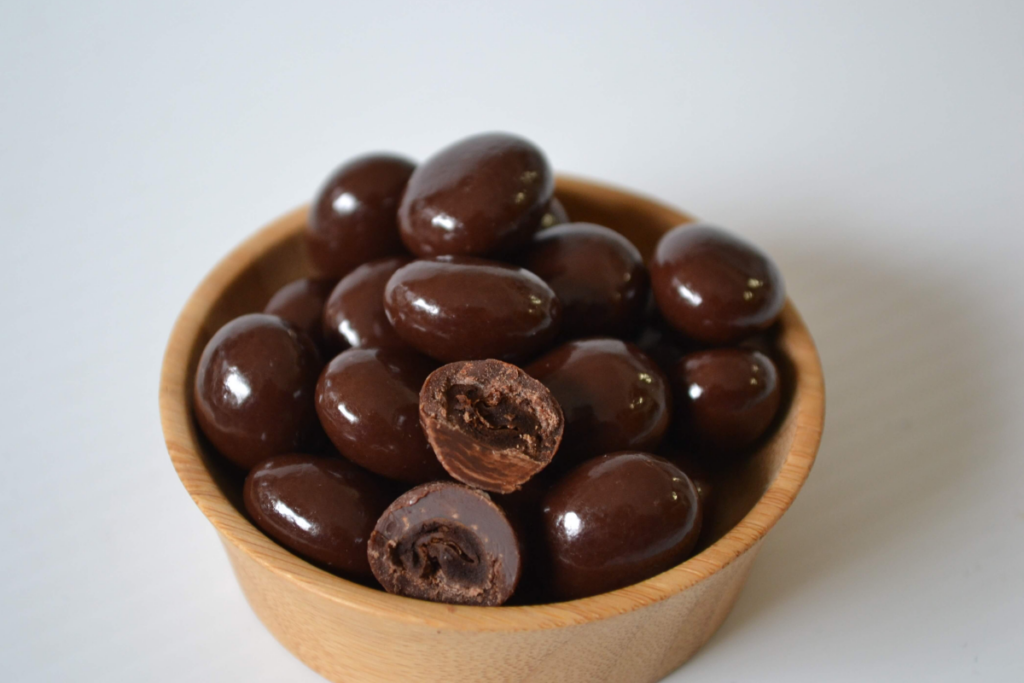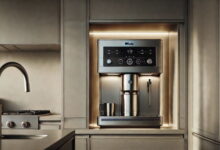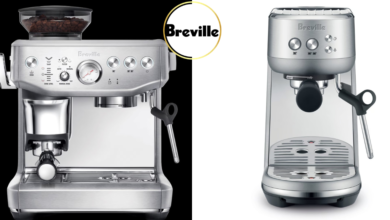How Much Caffeine in Chocolate Coffee Beans: Everything You Need to Know
How Much Caffeine in Chocolate Coffee Beans
How much caffeine in chocolate coffee beans are a delightful treat that merges the rich, bittersweet flavor of chocolate with the robust, earthy taste of coffee beans. This delicious combination has made them a favorite among coffee lovers and chocolate enthusiasts alike. However, beyond their irresistible taste, these beans contain a notable amount of caffeine, which can significantly impact your daily caffeine intake.
Understanding the caffeine content in chocolate-covered coffee beans is essential for anyone who enjoys these tasty snacks. Whether you’re looking to boost your energy levels or simply want to manage your caffeine consumption more effectively, knowing how much caffeine you’re consuming is key. In this comprehensive guide, we’ll explore everything you need to know about the caffeine content in chocolate-covered coffee beans, including factors that influence it, health considerations, and practical tips for enjoying them responsibly.
How Much Caffeine in Chocolate Coffee Beans
Let’s dive into what chocolate-covered coffee beans are and why they have become so popular.
What Are Chocolate-Covered Coffee Beans?

Definition
Chocolate-covered coffee beans are exactly what they sound like: roasted coffee beans coated in a layer of chocolate. These beans offer a unique combination of textures and flavors—the crunch of the coffee bean complemented by the smooth, sweet chocolate. They are often enjoyed as a snack, a gourmet treat, or even used as a topping for desserts and baked goods.
Brief History and Growing Popularity
The concept of coating coffee beans in chocolate likely emerged from the centuries-old traditions of consuming coffee and chocolate separately, both of which have rich histories. Coffee, originating from Ethiopia, and chocolate, with its roots in Mesoamerican cultures, have been beloved for their stimulating and satisfying properties. It was only a matter of time before these two ingredients were combined into a single indulgent treat.
The modern popularity of chocolate-covered coffee beans can be attributed to the gourmet coffee culture that has surged in recent decades. As interest in specialty coffee grew, so did the desire for unique coffee-related products. Chocolate-covered coffee beans fit perfectly into this niche, appealing to both coffee aficionados and chocolate lovers. They are now widely available in coffee shops, specialty stores, and even mainstream grocery stores.
The appeal of these beans lies not just in their flavor but also in their portability and convenience. They provide a quick energy boost, making them a popular choice for people on the go. Additionally, the variety in chocolate coatings—from dark and milk chocolate to white and flavored chocolates—adds to their widespread appeal.
By understanding what chocolate-covered coffee beans are and the history behind their popularity, we can better appreciate why knowing their caffeine content is essential for enjoying them responsibly.
Caffeine Content in Chocolate-Covered Coffee Beans
Understanding the caffeine content in chocolate-covered coffee beans involves several factors. The main contributors are the type of coffee bean, the type of chocolate used for coating, and the thickness of the chocolate layer. Let’s break down each of these components to see how they influence the overall caffeine content.
What Contributes to Caffeine Content?
- Type of Coffee Bean
- Arabica vs. Robusta: The type of coffee bean plays a significant role in the caffeine content. Arabica beans typically contain about half the caffeine of Robusta beans. Specifically, Arabica beans have about 1.2% caffeine content by weight, while Robusta beans can have up to 2.2% caffeine.
- Roasting Level: The roast level also affects caffeine content. Contrary to popular belief, darker roasts do not contain more caffeine. In fact, lighter roasts tend to retain more caffeine because the roasting process reduces the caffeine content slightly.
- Type of Chocolate
- Dark Chocolate: Generally contains more caffeine than milk chocolate. Dark chocolate can have about 12 mg of caffeine per ounce, while milk chocolate usually has about 9 mg per ounce. This difference can significantly impact the total caffeine content when the beans are coated in dark chocolate.
- Milk Chocolate: Contains less caffeine compared to dark chocolate but more sugar, which might also affect energy levels and overall consumption appeal.
- Thickness of the Chocolate Coating
- The amount of chocolate used to coat the beans can vary, which directly influences the total caffeine content. A thicker coating of chocolate means more caffeine from the chocolate itself, adding to the caffeine from the coffee bean.
Detailed Breakdown
- Single Bean Caffeine Content: On average, a single chocolate-covered coffee bean can contain between 7 to 12 mg of caffeine. This includes caffeine from both the coffee bean and the chocolate coating.
- Comparison with Other Products: For context, a standard cup of coffee contains about 95 mg of caffeine, which means you would need to eat about 8 to 14 chocolate-covered coffee beans to equal the caffeine content of one cup of coffee.
Factors Affecting Caffeine Levels
- Bean Type:
- Arabica Beans: 1.2% caffeine by weight.
- Robusta Beans: Up to 2.2% caffeine by weight.
- Chocolate Type:
- Dark Chocolate: Approximately 12 mg of caffeine per ounce.
- Milk Chocolate: Approximately 9 mg of caffeine per ounce.
- Coating Thickness:
- Thicker coatings increase caffeine from chocolate.
- Thinner coatings may result in a higher proportion of caffeine from the coffee bean itself.
Understanding these factors can help you estimate the caffeine content in chocolate-covered coffee beans and manage your intake effectively. Enjoying these treats in moderation can be a delightful way to get a caffeine boost without overdoing it.
Average Caffeine Content
Understanding the average caffeine content in chocolate-covered coffee beans can help you gauge how much you’re consuming and manage your intake effectively. On average, each chocolate-covered coffee bean contains about 7-12 mg of caffeine. This caffeine comes from both the coffee bean and the chocolate coating.
Breakdown of Caffeine Content
- Coffee Bean: A single Arabica coffee bean contains approximately 5-6 mg of caffeine, while a Robusta coffee bean contains around 10 mg.
- Chocolate Coating: The type of chocolate used can affect the total caffeine content. Dark chocolate generally contains more caffeine than milk chocolate. For example, a dark chocolate coating might add about 2-6 mg of caffeine per bean.
Thus, combining the caffeine from both components, a chocolate-covered espresso bean typically has a caffeine content ranging from 7-12 mg.
Comparison with Other Common Caffeine Sources
To put this into perspective, let’s compare the caffeine content in chocolate-covered coffee beans with other common caffeinated products:
- Cup of Coffee (8 oz): Approximately 95 mg of caffeine.
- Cup of Tea (8 oz): Approximately 47 mg of caffeine.
- Soda (12 oz): Approximately 30-40 mg of caffeine.
- Energy Drink (8 oz): Approximately 80 mg of caffeine.
- Chocolate Bar (1 oz): Approximately 12 mg of caffeine for dark chocolate.
Based on these comparisons, consuming about 10 chocolate-covered coffee beans would provide roughly the same amount of caffeine as an average cup of coffee.
Visual Aid: Caffeine Content Comparison Chart
Below is a visual representation of the caffeine content in various products:
| Product | Caffeine Content (mg) |
|---|---|
| Chocolate-Covered Coffee Bean | 7-12 |
| Cup of Coffee (8 oz) | 95 |
| Cup of Tea (8 oz) | 47 |
| Soda (12 oz) | 30-40 |
| Energy Drink (8 oz) | 80 |
| Chocolate Bar (1 oz, Dark) | 12 |
This chart highlights how a handful of chocolate-covered coffee beans can equate to other common sources of caffeine, making them a potent snack choice for a quick energy boost.
How Much Caffeine in Starbucks Chocolate Covered Espresso Beans: A Detailed Breakdown
Detailed Analysis
When it comes to chocolate-covered coffee beans, the caffeine content can vary widely depending on several factors, including the type of coffee bean, the type of chocolate used, and the brand. Here, we will analyze popular brands, provide case studies with actual data, and discuss the impact of dark vs. milk chocolate on caffeine levels.
Popular Brands and Their Caffeine Content

- Trader Joe’s Chocolate-Covered Espresso Beans
- Caffeine Content: Approximately 7 mg per bean.
- Details: Trader Joe’s offers a well-known variety of chocolate-covered espresso beans that are a favorite among consumers for their balance of taste and caffeine boost. Each bean is covered in dark chocolate, contributing to a higher caffeine content due to the combined caffeine from both the coffee bean and the chocolate.
- Starbucks Chocolate-Covered Espresso Beans
- Caffeine Content: Approximately 11 mg per bean.
- Details: Starbucks, a giant in the coffee industry, also offers chocolate-covered espresso beans that are popular for their strong coffee flavor and significant caffeine kick. The use of high-quality espresso beans and rich dark chocolate results in a potent caffeine combination.
- Dilettante Chocolate-Covered Espresso Beans
- Caffeine Content: Approximately 9 mg per bean.
- Details: Dilettante Chocolates provides gourmet chocolate-covered espresso beans, available in both dark and milk chocolate varieties. Their dark chocolate version is particularly noted for its higher caffeine content compared to the milk chocolate option.
How Much Caffeine in Trader Joe’s Chocolate Covered Espresso Beans? Understanding Your Snack Choices
Case Studies and Data Analysis
To provide a clearer picture, let’s look at actual data from these brands and compare the caffeine content:
| Brand | Caffeine Content (mg per bean) | Type of Chocolate |
|---|---|---|
| Trader Joe’s | 7 | Dark Chocolate |
| Starbucks | 11 | Dark Chocolate |
| Dilettante | 9 | Dark Chocolate |
| Dilettante (Milk Chocolate) | 6 | Milk Chocolate |
Impact of Dark vs. Milk Chocolate
The type of chocolate used in coating the coffee beans significantly affects the overall caffeine content. Here’s how:
- Dark Chocolate: Generally contains higher levels of caffeine compared to milk chocolate. For instance, dark chocolate typically contains about 12 mg of caffeine per ounce. When combined with the caffeine content of the espresso bean, the total caffeine per chocolate-covered bean increases.
- Milk Chocolate: Contains less caffeine, approximately 9 mg per ounce. Therefore, chocolate-covered coffee beans coated in milk chocolate will have a lower total caffeine content.
Why the Difference?
- Cocoa Content: Dark chocolate has a higher percentage of cocoa solids, which are naturally rich in caffeine.
- Sugar and Milk Addition: Milk chocolate has more sugar and milk, which dilutes the cocoa content and consequently reduces the caffeine content.
Health Considerations
When indulging in chocolate-covered coffee beans, it’s important to be aware of both the benefits and potential risks associated with their consumption, particularly due to their caffeine content.
Safe Caffeine Levels
The FDA recommends that adults consume no more than 400 milligrams of caffeine per day, which is roughly the amount found in four to five cups of coffee. Consuming caffeine within this limit is generally considered safe for most people. However, individual tolerance can vary, and some people may experience adverse effects at lower doses (ChocoVivo).
Benefits of Chocolate-Covered Coffee Beans
- Antioxidants: Both coffee beans and dark chocolate are rich in antioxidants. Coffee beans contain compounds like chlorogenic acids, which can help reduce inflammation and support overall health. Dark chocolate is known for its flavonoids, which are beneficial for heart health.
- Energy Boost: The caffeine in coffee beans provides a quick energy boost, improving alertness and concentration. This makes chocolate-covered coffee beans a convenient snack for a mid-afternoon pick-me-up.
- Mood Enhancement: Caffeine is known to enhance mood and reduce the likelihood of depression. Additionally, the theobromine in chocolate can promote a sense of well-being.
Risks of Overconsumption
- Excessive Caffeine Intake: Consuming too many chocolate-covered coffee beans can easily lead to excessive caffeine intake. Symptoms of too much caffeine include insomnia, nervousness, restlessness, stomach irritation, nausea, and in severe cases, irregular heartbeat and muscle tremors (ChocoVivo) (ChocoVivo).
- Caloric Intake: While they are delicious, chocolate-covered coffee beans are also high in calories and sugar, which can contribute to weight gain if consumed in large quantities.
- Dental Health: The sugar content in chocolate can contribute to tooth decay if proper dental hygiene is not maintained.
Moderation is Key
To enjoy the benefits while minimizing the risks, it is important to consume chocolate-covered coffee beans in moderation. Here are some tips:
- Portion Control: Be mindful of the serving size. A small handful (about 10-15 beans) is often enough to enjoy the flavor and get a caffeine boost without overdoing it.
- Balance Your Diet: Incorporate chocolate-covered coffee beans as part of a balanced diet. Pair them with healthy snacks to avoid a sugar crash.
- Monitor Caffeine Intake: Keep track of all sources of caffeine you consume throughout the day, including coffee, tea, and other caffeinated products.
In summary, while chocolate-covered coffee beans can be a delightful treat with several health benefits, it is important to consume them responsibly to avoid potential negative effects. Balancing your intake and being aware of your total caffeine consumption can help you enjoy these treats without compromising your health.
Practical Consumption Tips

Enjoying chocolate-covered coffee beans can be a delightful experience, but it’s essential to consume them responsibly to avoid overdoing your caffeine intake. Here are some practical tips to help you savor these tasty treats without going overboard:
- Mindful Portion Control: Instead of mindlessly munching on chocolate-covered coffee beans, be mindful of your portion size. Consider measuring out a serving size to help you keep track of how many beans you’re consuming.
- Know Your Limits: Understand your caffeine tolerance and adjust your intake accordingly. If you’re sensitive to caffeine or have consumed other caffeinated beverages throughout the day, consider reducing the number of beans you consume to avoid excessive stimulation.
- Compare to Coffee: To put the caffeine content of chocolate-covered coffee beans into perspective, consider that approximately 7-12 beans contain the same amount of caffeine as a standard cup of coffee. Use this comparison to gauge how many beans are equivalent to your usual coffee intake.
- Integrate Into Snacks: Incorporate chocolate-covered coffee beans into your snacks or meals to enjoy them as part of a balanced diet. Sprinkle them over yogurt or oatmeal for added crunch and flavor, or mix them with nuts and dried fruit for a homemade trail mix.
- Stay Hydrated: Remember to drink plenty of water while enjoying chocolate-covered coffee beans, as caffeine can have a diuretic effect. Staying hydrated can help mitigate any potential side effects and keep you feeling refreshed.
- Avoid Before Bed: Due to their caffeine content, it’s best to avoid consuming chocolate-covered coffee beans close to bedtime to prevent interference with your sleep quality. Opt for decaffeinated options or enjoy them earlier in the day to avoid disrupting your sleep patterns.
- Listen to Your Body: Pay attention to how your body reacts to chocolate-covered coffee beans. If you experience any adverse effects such as jitteriness or heart palpitations, reduce your intake or refrain from consuming them altogether.
FAQs About Chocolate-Covered Coffee Beans
Do chocolate-covered coffee beans have caffeine?
Yes, chocolate-covered coffee beans contain caffeine. The caffeine content varies depending on factors such as the type of coffee bean, the amount of chocolate coating, and the specific recipe used by manufacturers. Typically, each bean contains around 7-12 mg of caffeine.
How many chocolate-covered coffee beans equal a cup of coffee?
The caffeine content in chocolate-covered coffee beans can vary, but on average, consuming around 10-15 beans is roughly equivalent to drinking a standard cup of coffee in terms of caffeine content. However, it’s essential to consider individual tolerance levels and the strength of the coffee used to make the comparison.
Will chocolate-covered coffee beans keep you awake?
Chocolate-covered coffee beans can provide a noticeable caffeine boost, which may help keep you awake and alert, especially if consumed in moderation. However, excessive consumption, particularly close to bedtime, may interfere with sleep quality.
How many chocolate-covered espresso beans equal a cup of coffee?
The caffeine content in chocolate-covered espresso beans is higher than in regular coffee beans due to their smaller size and higher concentration of coffee. Consuming around 5-10 chocolate-covered espresso beans may be equivalent to drinking a standard cup of coffee in terms of caffeine content.
How many chocolate-covered espresso beans can I eat?
The number of chocolate-covered espresso beans you can safely consume depends on various factors, including your caffeine sensitivity, overall health, and daily caffeine intake from other sources. It’s generally recommended to consume them in moderation and be mindful of your caffeine consumption throughout the day.
Are Trader Joe’s espresso beans caffeine-rich?
Trader Joe’s espresso beans are known for their rich flavor and robust caffeine content. While the exact caffeine content may vary, they typically contain a significant amount of caffeine, making them an excellent choice for those seeking an energy boost.
Are chocolate-covered espresso beans good for you?
While chocolate-covered espresso beans can be a tasty treat, they should be enjoyed in moderation as part of a balanced diet. They contain caffeine, which can provide temporary energy but may also lead to side effects if consumed excessively. Additionally, the chocolate coating adds extra calories and sugar, so it’s essential to enjoy them in moderation.
Do chocolate-covered espresso beans give you energy?
Yes, chocolate-covered espresso beans can provide a quick energy boost due to their caffeine content. Consuming them can help increase alertness and concentration, making them a popular choice for a mid-afternoon pick-me-up or a pre-workout snack.
Are Starbucks Chocolate Covered Espresso beans available?
Starbucks offers a variety of chocolate-covered espresso beans, which are typically available in their stores or online. These beans combine the bold flavor of Starbucks espresso with the indulgence of chocolate, making them a popular choice among coffee lovers looking for a convenient caffeine fix.
Are Dark Chocolate-covered Espresso Beans healthier?
Dark chocolate-covered espresso beans may offer some potential health benefits compared to milk chocolate varieties. Dark chocolate contains antioxidants and has been linked to various health benefits, including improved heart health and cognitive function. However, it’s essential to enjoy them in moderation, as they still contain caffeine and added sugars.
How much caffeine is in a standard cup of coffee?
The caffeine content in a standard cup of coffee can vary depending on factors such as the type of coffee bean, brewing method, and serving size. On average, an 8-ounce cup of brewed coffee contains approximately 95 mg of caffeine, but this can range from 70 mg to 140 mg depending on various factors.
Conclusion
Chocolate-covered coffee beans offer a delectable combination of flavors, blending the sweetness of chocolate with the boldness of coffee. Throughout this guide, we’ve explored the intricacies of their caffeine content, discovering that each bean packs a moderate amount of caffeine, typically ranging from 7 to 12 milligrams.
Read More: Can You Use Brown Sugar for Coffee? Discover the Benefits and Best Recipes In 2024






